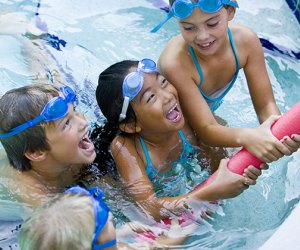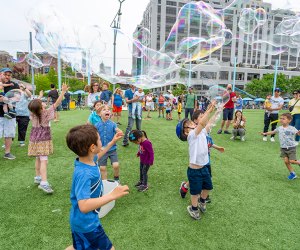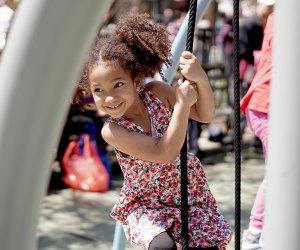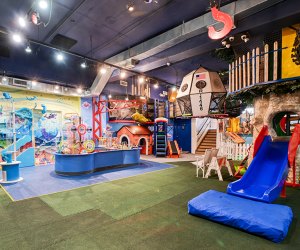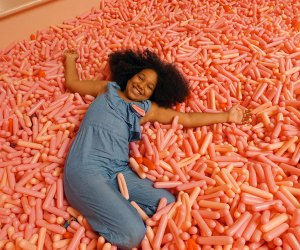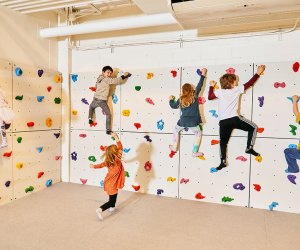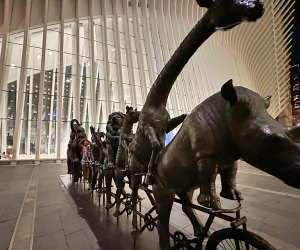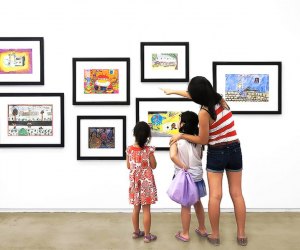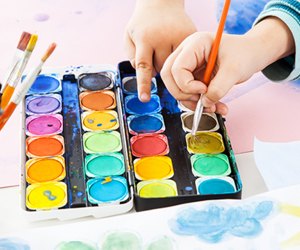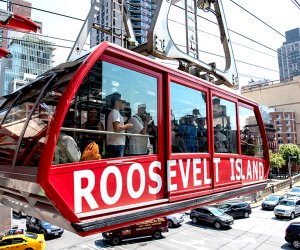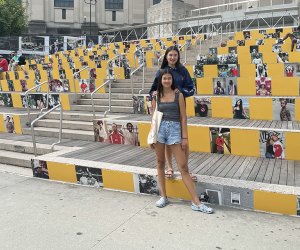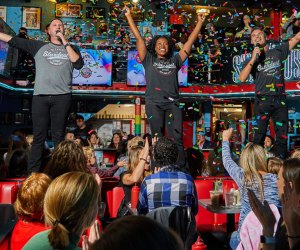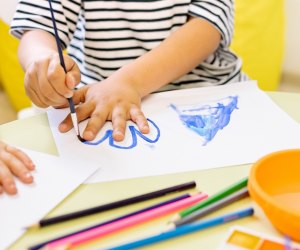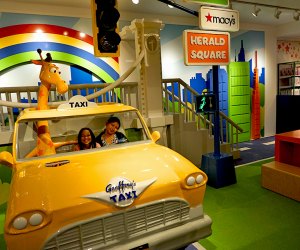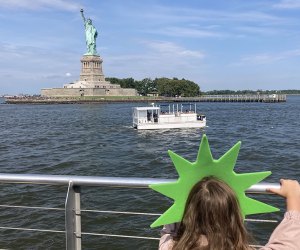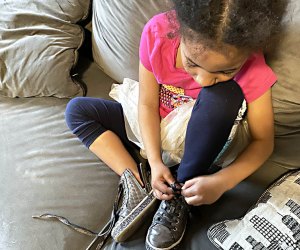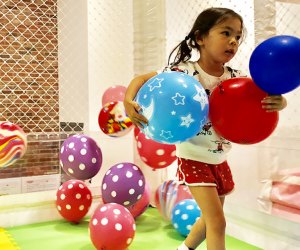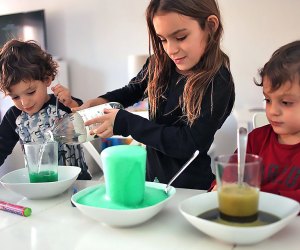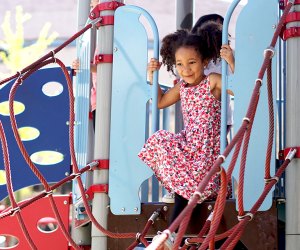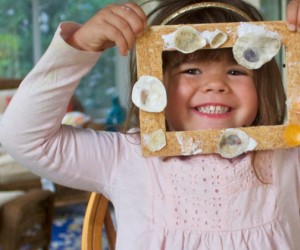What Can Really Be Recycled? Myth-Busting the Recycle Symbol
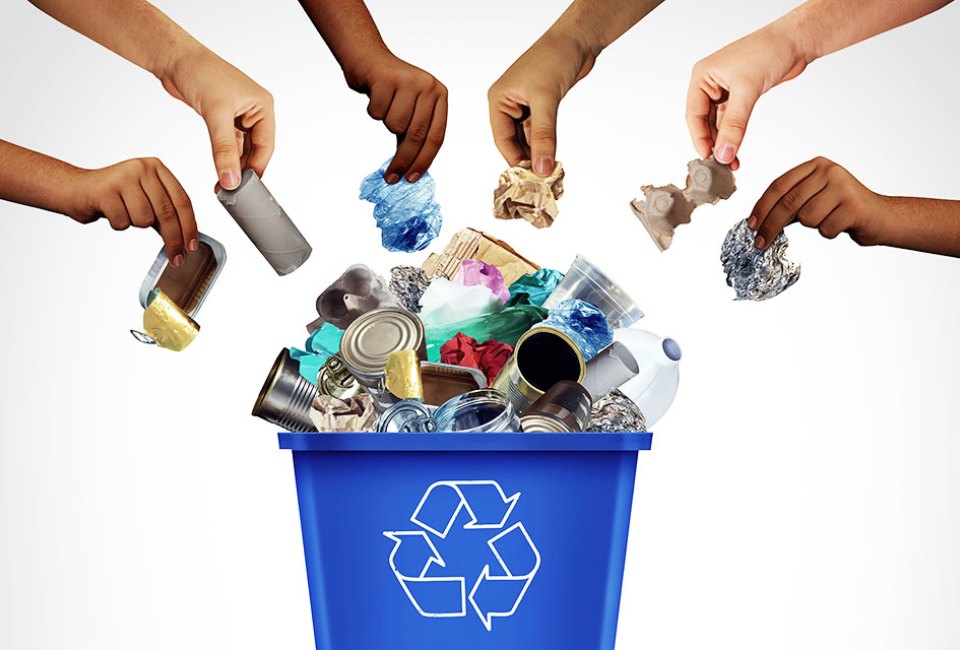
We all know how important recycling is for the environment. Unfortunately, it's hard to figure out exactly how to recycle. What does the recycle symbol mean? What can be recycled (and what can't)? Where do we put items we want to recycle? And, most important, how do we teach kids about recycling symbols and what they mean?
This confusion—coupled with the fact that recycling rules often vary from city to city—is part of the reason only 32% of trash in the US is recycled, according to the US Environmental Protection Agency.
We're here to (hopefully) answer all of your questions about what to recycle, how to recycle it, and just how to decode that ubiquitous recycle symbol. Check out our Earth Kids Guide for more tips on creating Earth-friendly habits for your family, including our tutorial on how to compost. And, sign up for our Earth Kids newsletter for more ideas and activities every month.
OUR LATEST VIDEOS
What Does the Recycle Symbol Mean?
We've all seen the recycle symbol, which consists of three chasing arrows forming a triangle. Almost all plastic products have that recycle symbol on them. But that doesn't mean all of that plastic can actually be recycled.
The key is to look at the number inside the recycle symbol, which refers to the chemicals used in the plastic. Any plastics with #1 or #2 inside their recycling symbols can be placed in your household recycling bin. Those with other numbers either can't be recycled or usually need to be taken to a recycling location (which sometimes depends on where you live).
RELATED: How to Get Free Stuff, Save Money, and Reduce Waste
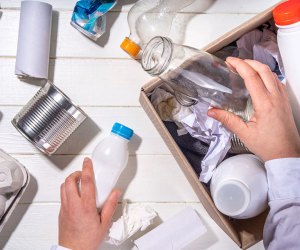
Check your city or town's recycling guidelines is always a good idea.
What Can Be Recycled?
Different municipalities have facilities designed to recycle different things, so the answer to that question can change depending on where you live. But, there are some general rules we can all live by on what items can usually be recycled. Those items are as follows:
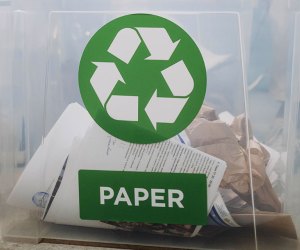
Be sure to recycle that mountain of paperwork! Photo by Cottonbto Studios via Pexels
Paper and Cardboard: Almost All
Magazines, newspapers, worksheets, and flattened boxes can all go in the recycling bin as long as they're not soiled or wet. Pizza boxes should be clear of cheese and crusts.
Cans: Most
Tin, aluminum, and steel containers should be rinsed and placed in the recycling bin. Make sure aerosol cans are completely empty and you have removed the plastic lid.
Glass: Needs to be Dropped Off in Some States
If you live in California, Connecticut, Oregon, Iowa, Michigan, Maine, Vermont, Massachusetts, or New York, bring your glass bottles to the store or to a local recycling center to collect deposits. Most other states include glass in their curbside recycling programs, but check with your local recycling office to see your area's rules.
RELATED: Tricks for How Kids Can Conserve Water: Make Water Conservation Fun
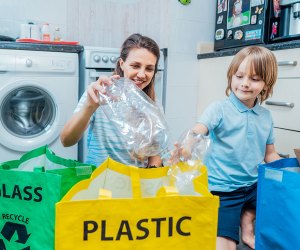
Almost all plastic bottles and food containers are recyclable.
Plastic Bottles, Jugs, and Containers: Nearly All
Nearly all plastic bottles (containers where the neck is narrower than the body) can be recycled. This includes plastic water bottles, sports-drink bottles, milk jugs, juice bottles, and more. Rinse plastic bottles out and put the lid back on before tossing them in the recycling bin.
Many other hard, solid plastic containers are also recyclable. Yogurt and condiment containers, plastic clamshells for fruit, and butter tubs are all recyclable in the same way as bottles—rinsed and with the lid on.
Plastic Bags and Films: Take to the Grocery Store
Thin plastic films—grocery bags, bread bags, newspaper bags, and plastic wrap that is used to hold together solid items such as water bottles and toilet paper—can be recycled in specially marked containers at grocery stores across the country. Because plastic grocery bags can't be recycled in most curbside programs, don't bag your other recyclables in them. Instead, empty the recycling directly into the bin, or put it in a paper bag.
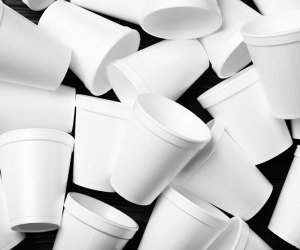
In most cities, putting Styrofoam in the recycling bin is a no-no.
What Can't Be Recycled?
Certain Numbers of Plastic
#1 (PET) and #2 (HDPE) in the recycle symbol account for most hard plastic containers that we mentioned above—water and soda bottles, yogurt cups, cleaning supplies, shampoo bottles, etc. As we mentioned, these items can be placed in your recycling bin. #4 (LDPE) accounts for most plastic bags, which can be recycled at your local grocery store. That leaves #3, #5, #6, and #7.
#3 (PVC): PVC is used to make pipes, decking, and some larger plastic containers like detergent bottles. This material lasts 30 to 50 years and has a high chlorine content, so it can be separated and taken to special locations to recycle, but not all municipalities do so. Consider using laundry detergent sheets or buying the largest container you can find so you're consuming fewer of these plastic bottles. Go as long as possible before replacing other PVC-based materials.
#5 (Polypropelene): This is used to make drinking straws and prescription medicine containers. It has to melt at a very high temperature and be blended with unrecycled polypropelene to be recycled. So, it's better to use a reusable straw or forego straws altogether. For prescription bottles and other #5 plastics, search RecycleNation.com for a place to handle them. Some curbside recycling programs do accept them, so check if yours does.
#6 (Styrofoam): This light packaging is used for to-go coffee cups, carryout food containers, egg cartons, and packing peanuts. Most cities don't accept Styrofoam in their curbside recycling, so we suggest reducing your use or finding a recycling center that takes it on HomeForFoam.com.
#7: This refers to all other plastics. These are difficult to recycle because some are a mix of different chemicals that can contaminate each other. If you find a #7, it might be better to find a second non-food use for it or just throw it out.
For a full description of plastics and what they're used for after they've been recycled, check out this interesting infographic from Plastic Action Centre.
Wax-coated Paper Cups, To-go Coffee Cup Lids, Toothpaste Tubes, Chip Bags, and Juice or Pureed-Food Pouches
These items just aren't recyclable because most of them combine multiple materials that can't be separated during the recycling process.
Items That Can Get Tangled, Like Christmas Lights and Hoses
According to Waste Management, these items can wrap around equipment, which puts workers in danger and can shut down entire recycling centers. It's better to donate these items if they're still in good shape, otherwise throw them in the trash.
RELATED: How to Pack a Zero-Waste School Lunch
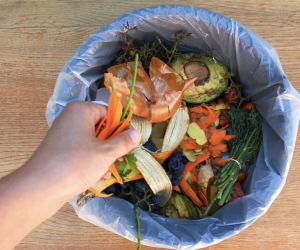
Composting is an Earth-friendly way to dispose of food scraps.
What To Do with Other Items
Food Scraps
Composting is the process of recycling organic matter, such as leaves and food scraps (coffee grounds, fruit and veggie skins, egg shells, etc.) into fertilizer to enrich soil. We tell our kids that composting is nature's recycling. Check out our guide to composting for kids and families to learn how to start your own home compost pile.
Clothing
Old clothes can be taken to a thrift store such as Goodwill or to a local textile recycling event. Many recycling companies will separate the fibers to be made into industrial rags or carpet, keeping clothing out of landfills.
Electronics
Consider bringing old electronics to an electronics recycling event. You can't put your 2005 Motorola Razor in with the standard recycling, but some of the components can be taken apart and reused.
What Happens if I Put Something That Can't be Recycled in the Recycling Bin?
Most facilities don't have the capacity to clean and appropriately recycle items that are accidentally put in the recycling bin. Workers must separate these items out and discard them. However, some items, such as dirty diapers and food waste, can actually contaminate everything in the bin and force workers to throw everything away. Some can even damage recycling equipment. So make sure you're only putting in things that are recyclable in your city's program, and that they are rinsed and free of food debris.
Important Takeaways
After all of this research, my biggest conclusion is that we should try as much as possible to buy and use products that come in obviously recyclable or compostable packaging. When possible, bring your own reusable bags to the grocery store or farmer's market. And support companies that use recycled materials—this keeps the market for recycled materials strong.







